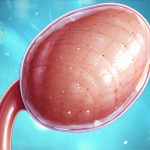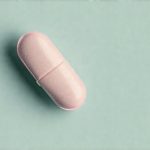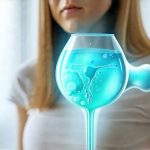Histamine is a fascinating molecule often associated with allergic reactions – runny noses, itchy skin, and hives come to mind for many people. However, its role extends far beyond allergy, deeply influencing numerous physiological processes throughout the body, including those related to the urinary bladder. Increasingly, research suggests that histamine plays a significant—and sometimes detrimental—role in various bladder disorders, ranging from overactive bladder (OAB) to interstitial cystitis/bladder pain syndrome (IC/BPS). Understanding this link is crucial for developing more targeted and effective treatments for these often debilitating conditions.
The connection between histamine and the bladder isn’t a new discovery, but its complexity is becoming clearer as scientists delve deeper into the neurobiology of pelvic health. Histamine receptors are present throughout the urinary tract, including on bladder smooth muscle cells, nerve endings, and mast cells – immune cells that release histamine in response to various stimuli. Activation of these receptors can modulate bladder capacity, sensation, and even pain perception. Disruptions in histamine regulation or an overabundance of histamine activity may contribute to the symptoms experienced by individuals with bladder disorders, making it a potential therapeutic target for improving quality of life.
Histamine Receptors and Bladder Function
There are four main types of histamine receptors: H1, H2, H3, and H4. Each has distinct functions and distribution within the body. In the context of bladder function, H1 receptors appear to play a particularly important role in mediating bladder contraction and sensation. When activated by histamine (or other substances that bind to them), H1 receptors can cause smooth muscle cells in the bladder wall to contract, leading to increased urgency and frequency – hallmark symptoms of OAB. Furthermore, stimulation of H1 receptors on nerve endings can enhance pain signals, contributing to chronic pelvic pain associated with IC/BPS.
H2 receptors, while less directly involved in immediate bladder contraction, can also influence bladder function. They are thought to modulate inflammation and may play a role in the heightened sensitivity often experienced by individuals with IC/BPS. The interplay between H1 and H2 receptors is complex; activating H2 receptors can sometimes counteract the effects of H1 receptor activation, offering potential avenues for therapeutic intervention. Finally, H3 and H4 receptors have been less extensively studied in relation to bladder function but are emerging as possible targets due to their roles in immune modulation and neurotransmitter release within the pelvic region.
The distribution of these receptors isn’t uniform across individuals; genetic variations can influence receptor density and sensitivity, potentially explaining why some people are more susceptible to histamine-related bladder problems than others. Moreover, inflammatory processes within the bladder can upregulate histamine receptor expression, creating a vicious cycle where inflammation drives histamine release, which then exacerbates inflammation. What is the difference between spot and 24h urine collection can help assess inflammatory markers in the bladder.
The Role of Mast Cells and Inflammation
Mast cells are key players in the histamine story when it comes to bladder disorders. These immune cells reside in tissues throughout the body, including the bladder wall, and are responsible for releasing histamine – along with other inflammatory mediators – in response to various triggers like allergens, injury, or stress. In a healthy bladder, mast cell activity is relatively low. However, in conditions like IC/BPS, there’s often evidence of mast cell activation, leading to an increased release of histamine and other pro-inflammatory substances.
This chronic inflammation can damage the protective lining of the bladder (the urothelium), making it more permeable and allowing irritants to penetrate deeper into the bladder wall. This further stimulates mast cells, creating a self-perpetuating cycle of inflammation and pain. Research indicates that individuals with IC/BPS often have higher levels of histamine and other inflammatory markers in their urine and bladder tissue compared to healthy controls. Furthermore, studies have shown that blocking histamine release or inhibiting histamine receptors can alleviate some symptoms associated with IC/BPS, suggesting a causal relationship between mast cell activity, histamine, and the condition’s pathology. What’s the link between PCOS and bladder issues may also play a role in inflammation.
Histamine Intolerance & Bladder Symptoms
Histamine intolerance is a relatively newly recognized phenomenon where the body struggles to break down histamine effectively, leading to an accumulation of histamine and subsequent symptoms. This can occur due to deficiencies in diamine oxidase (DAO), the enzyme responsible for metabolizing histamine in the gut, or due to increased histamine production from various sources like diet or gut dysbiosis. While not directly a bladder disorder itself, histamine intolerance can significantly exacerbate bladder symptoms.
- Individuals with histamine intolerance often experience heightened sensitivity to foods high in histamine, such as fermented products, aged cheeses, and alcohol.
- Increased intestinal permeability (leaky gut) common in histamine intolerance allows more histamine to be absorbed into the bloodstream, potentially reaching the bladder and triggering mast cell activation.
- The systemic inflammatory response associated with histamine intolerance can contribute to chronic pelvic pain and heightened bladder sensitivity.
Managing histamine levels through dietary modifications and supporting DAO enzyme activity may be beneficial for individuals whose bladder symptoms are linked to histamine intolerance – though it’s crucial to work with a healthcare professional to determine if this is the underlying cause of their issues. What is the link between IBS and UTIs in women should also be considered when evaluating chronic pelvic pain.
Antihistamines as Potential Treatment Options
Given the role of histamine in bladder disorders, antihistamines have been investigated as potential treatment options, particularly for OAB and IC/BPS. First-generation antihistamines like diphenhydramine and chlorpheniramine are known to cross the blood-brain barrier readily and can cause significant sedation – limiting their utility in chronic bladder management due to side effects.
However, second-generation antihistamines like loratadine, cetirizine, and fexofenadine have a better safety profile and are less likely to cause drowsiness. Some studies have shown that these medications can reduce urinary frequency and urgency in individuals with OAB, although the results have been mixed. In IC/BPS, certain antihistamines have demonstrated some ability to alleviate pain and improve bladder function by reducing mast cell activation and inflammation.
It’s important to note that antihistamines are typically used as an adjunct therapy – meaning they’re combined with other treatments like pelvic floor physiotherapy or medications targeting different aspects of the disorder. Antihistamines aren’t a cure-all, and their effectiveness can vary greatly depending on the individual and the underlying cause of their bladder symptoms. What is the difference between symptom relief and curative drugs should be discussed with a healthcare professional.
Future Directions in Histamine & Bladder Research
Research into the link between histamine and bladder disorders is ongoing, with several promising avenues for future investigation. One area of focus is developing more targeted therapies that specifically block histamine receptors within the bladder without causing systemic side effects. This could involve developing novel drugs or utilizing drug delivery systems to ensure medication reaches the bladder wall effectively.
Another exciting area is exploring the role of the gut microbiome in modulating histamine levels and inflammation. Gut dysbiosis can contribute to both histamine intolerance and increased intestinal permeability, potentially exacerbating bladder symptoms. Interventions aimed at restoring a healthy gut microbiome – such as probiotic supplementation or dietary changes – may offer a novel approach to managing these conditions. Finally, researchers are investigating the potential of immunomodulatory therapies that target mast cell activation and reduce chronic inflammation in the bladder. A deeper understanding of these complex interactions will undoubtedly lead to improved treatments and better quality of life for those living with bladder disorders. What is the link between urine and gout could also contribute to inflammation in some patients.





















